5 Great ways to turn Danse Macabre into Halloween Music Escape Room
Are you looking for ways to connect and reach your middle school or upper elementary music students? Danse Macabre is the classic Halloween instrumental piece and perfect for grabbing their attention with spooky music! I’ll share with you what worked for me, how I turn history into escape room like activities, and why I love sharing this tone poem with 5th – 8th grade students.
I don’t know what it is. Do you like to be scared? I scream! Yes, out loud at scary movies. My husband thinks this is so funny. We recently went to Disney World and the line to get into the Haunted Mansion is still so long even though it has been around for decades. Around where I live, haunted corn mazes are very popular. The thought of being scared just never goes out of style.
Camille Saint Saëns Danse Macabre
Still students are drawn to the excitement of being scared, and the Danse Macabre spooky tone poem uses powerful music idioms like the melody from Dies Irae and the haunting unresolved tritone interval masterfully crafted by Camille Saint-Saëns.
I find when I love a song or piece of music my excitement spills over to the students. Also when I let my students experience the music they learn more than just listening to me talk.
#1 Set the Stage
Camille Saint-Saëns composed Danse Macabre to tell the story from the poem by Henri Cazalis. He included a portion of the poem on the front cover of his manuscript score. l use the poem as a great way to grab my students’ attention and set the stage for a music escape room that will hook them in for an adventure.
I played around with my computer’s text reader and found the perfect voice to read the poem for Danse Macabre. (Check out the video preview here). This also saves my voice. Plus there are free voice generator programs you can try. Then pair this up with graphics and text overlay to go with this voice. At the end of the poem add the instructions for the escape tasks. It can be as simple as, “Your teacher will hand out the tasks you must complete to escape the music room.” Then create a sense of urgency with a 10 second countdown.
Word Wall
Add to your lesson plan with the set of 6 posters to display the styles of composition from the Romantic Era. This was a time when composers broke free of rules and form to compose from their imagination and emotions. Their music continues to inspire over a century later. Grab this set of posters for free!
#2 Reading Packet
To begin the Danse Macabre escape room, hand out a reading packet students will use to complete tasks. I start the packet with some vocabulary that I want my students to connect with. As I research the piece and composer I find words I’m interested in and what I think my students need more information on to grasp a better understanding. Here’s my list:
- Romantic Era
- Tone Poem
- Prodigy
- Perfect Pitch
- Dies Irae
- Tritone
Camille Saint-Saëns Biography
Next I put together a bios on Camille Saint-Saëns. Along with the typical information of birthplace, date of birth and death, instruments and music studies, I look for information that shows exceptional music talent. Camily Saint-Saëns displayed perfect pitch at the age of 2.
There are many directions you can go when writing a bio. Because this is a time in history when cures for disease were rare, many composers had a lot of tragedy and sorrows in their life. Death is a common theme written about, painted and composed. Camille Saint Saëns like many is no stranger to sorrow. His adult sorrows may bring up a lot of issues for some of my students. For this reason, I choose to focus more on his achievements and talents.
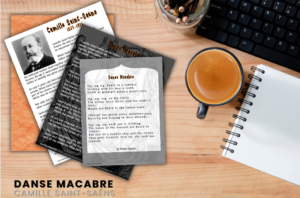

Music Danse Macabre
For the final reading material, I include history and program notes for the music to give purpose and meaning on what students will hear in the song, Danse Macabre. To begin the harp signals midnight with the 12 plucks on a string. Followed by an attack of the tritone, “diabolus in musica”, on a violin, a fitting choice to represent death. Saint-Saëns even used scordatura tuning. The solo violin’s E string was lowered to an Eb to create the tritone. Then students can hear clatter of bones on the xylophone and the zig, zig, zag or strings, horns, and woodwinds.
My students really liked learning about the Dies Irae theme in music. This theme with a few simple notes from a medieval Gregorian Chant has been around for centuries and now is programmed into our minds to signal doom, gloom and probable death. They really love discovering that it is used in so many movies they have watched. I’ll put a link below that I like to show my students.
#3 Listening Map
All this is a primer for a great listening map. I was able to condensed this score of Danse Macabre into 10 pages or shrink all 10 pictures into one page. The best way to show students is digital through pdf or google slides where you can advance each slide as the music is played. Each slide shows melodic contour, instruments and patterns to represent sections of the music.
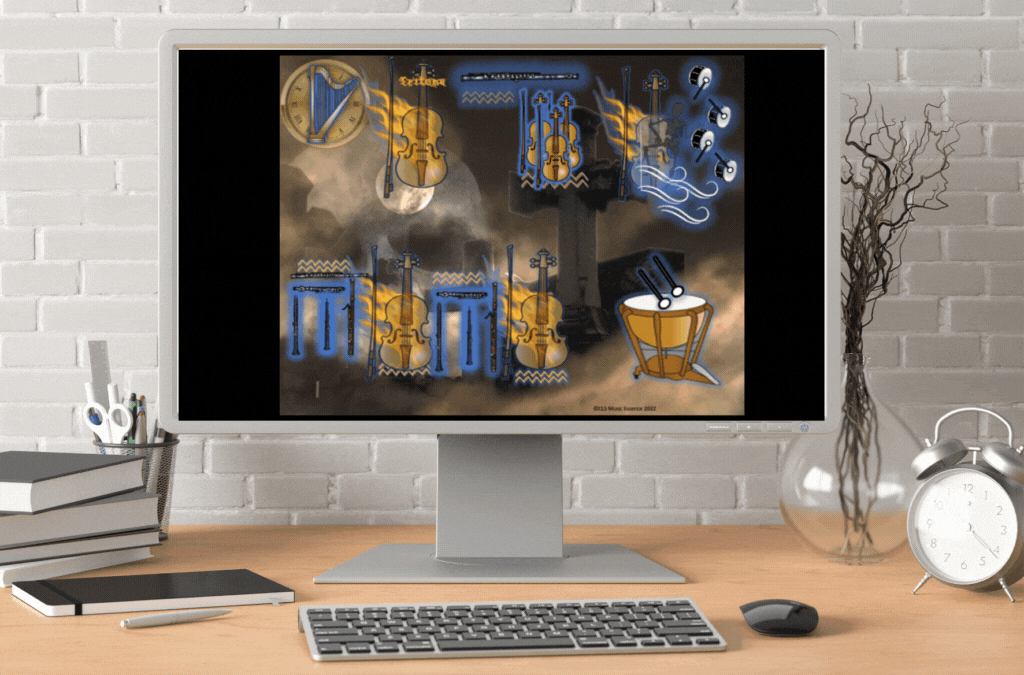

What I want my students to experience is that music is not random but well thought out patterns to convey a message and evoke emotions.
#4 Escape Tasks
Escape Room Like Activities
Now the fun part! The Danse Macabre escape room tasks. To ensure students have retained some facts from this lesson I add escape tasks or music activities. First I want them to retain some of the history facts so I create a crossword puzzle that they will need to go back and search the reading material to find the answers.
Second, I also want to ensure an understanding of new vocabulary terms. I represent terms in a picture format and do a matching worksheet. Music terms become familiar the more students interact with them. I also created an unscramble worksheet to keep words fresh in their mind.
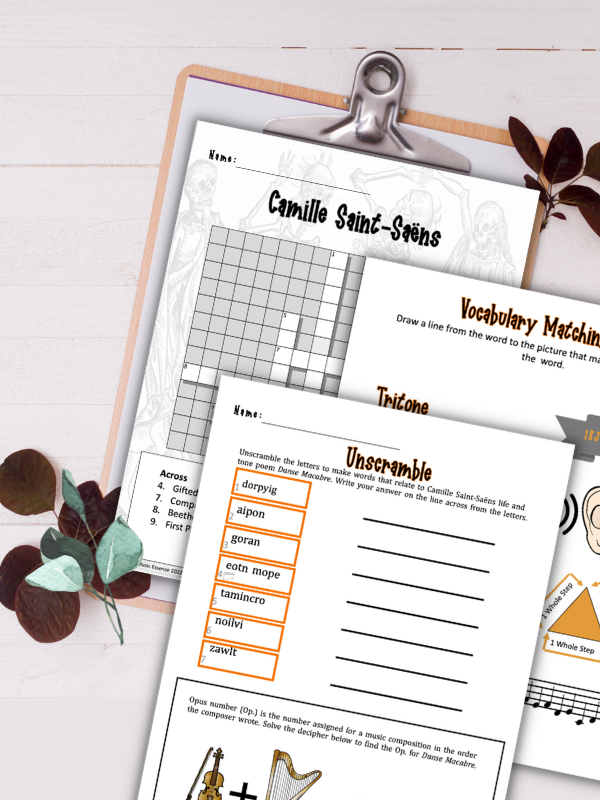

Lastly, I often use the Opus number, (Op) as a hidden decipher clue for the final escape. Danse Macabre is Op. 40. I hid small icons of instruments by numbers on the 3 different worksheets. The final problem just shows a math statement using the instruments.
- Violin + harp x xylophone =
#5 Optional Tasks
Because I teach hour-long classes, I extended the Danse Macabre listening task. I made the 10 listening map pictures into 4 per page (less coping), so students can cut pictures out. Then I have students re-listen to the song, and arrange the pictures into the order they are played. This can be tricky and it may be best to work in small groups.
If students are still having trouble, I give hints. One hint is a list of times for when each slide is played. Another hint is to show some of the slides in their order and let them just fill in the gaps. To differentiate for younger grades, I made them a jigsaw puzzle from the page where I put all 10 slides together. All they have to do is click, drag and drop in google slides.
I hope you’re inspired to share music history in this fun way. If you want to see my lesson plan that includes all I wrote about in this blog, click here.
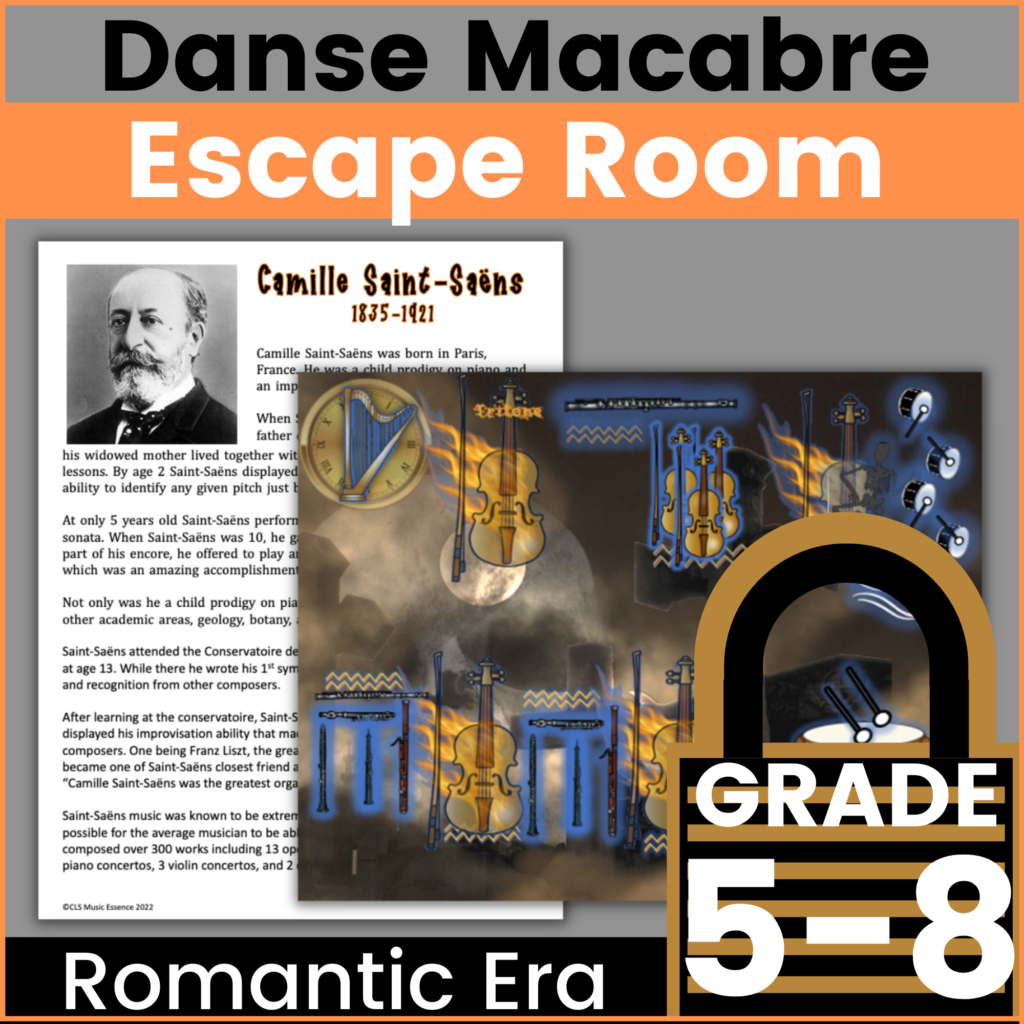

Read more on teaching music escape rooms, Spring by Vivaldi here.
Links I found helpful:
Tritone information: https://www.classicfm.com/discover-music/music-theory/what-is-a-tritone/
Dies Irae: https://www.yout-ube.com/watch?v=-9fsKOh0L4g

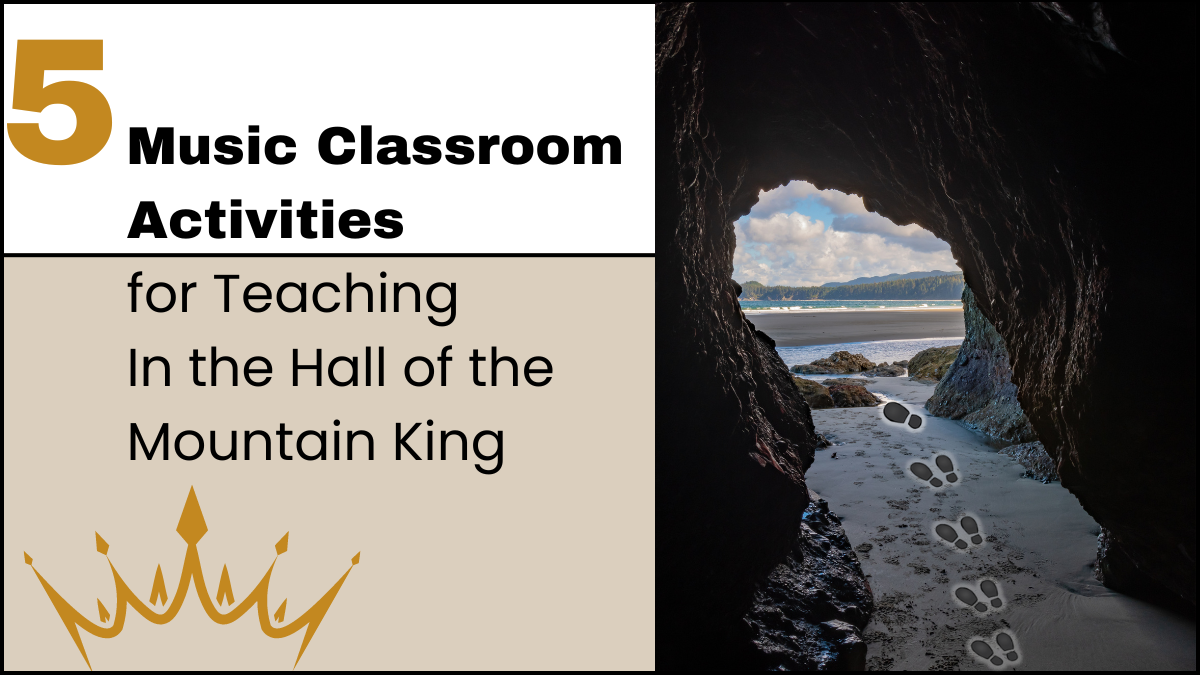





3 Comments